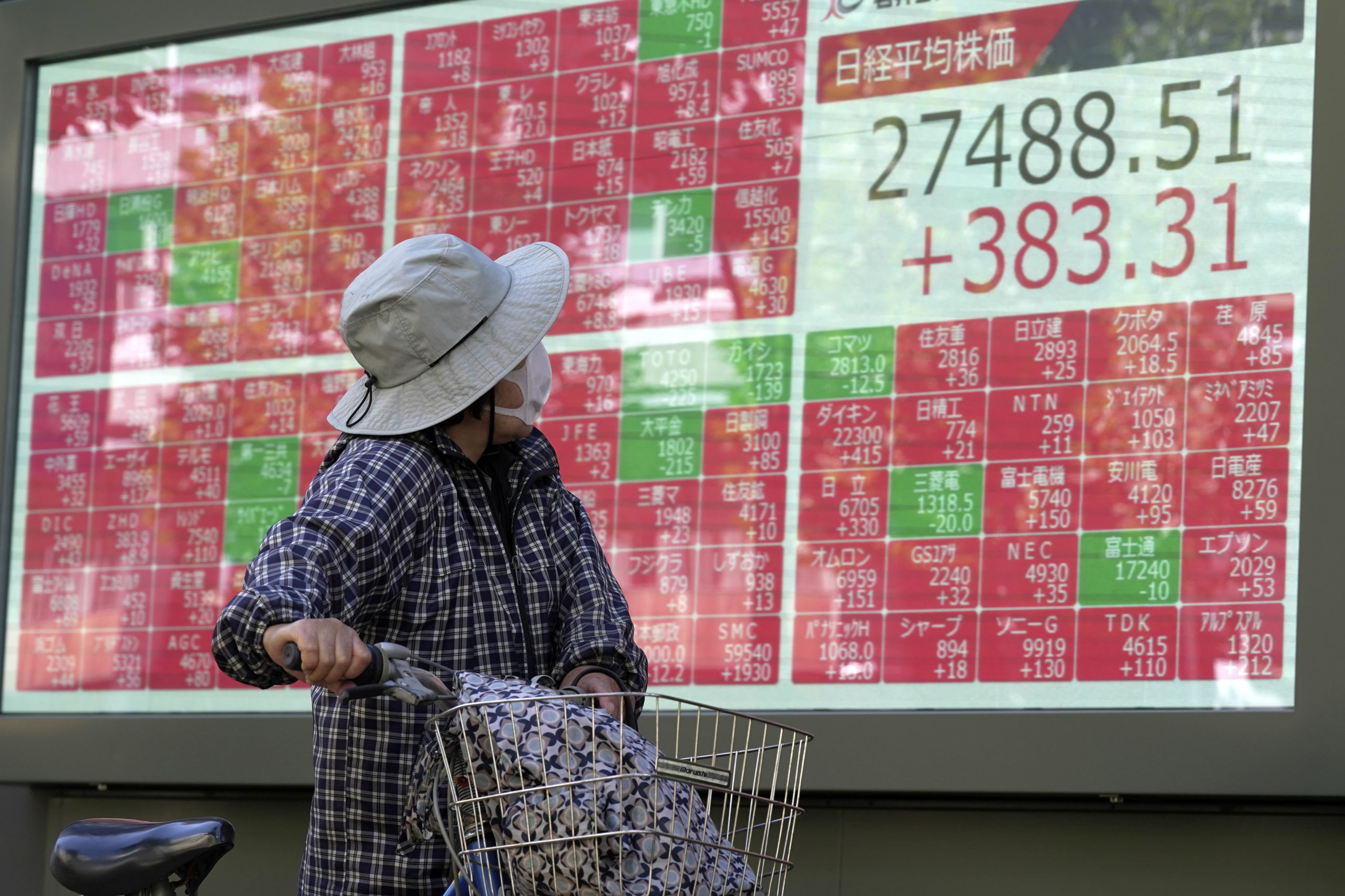BANGKOK (AP) — Shares have advanced in Asia despite a retreat on Wall Street. Hong Kong jumped more than 3% and most other major indexes saw strong gains.
A private survey of manufacturers showed some improvement in the business outlook in China, helping to counter renewed concerns over COVID-19 outbreaks in some cities.
Investors also were snapping up bargains after recent losses.
The Hang Seng in Hong Kong gained 454 points to 15,141.96, while the Shanghai Composite index was up 1.1% at 2,926.46.
Tokyo’s Nikkei 225 edged 0.2% higher, to 27,646.34, while the Kospi in Seoul jumped 1.4% to 2,326.57. The S&P/ASX 200 rose 1% to 6,931.00.
Markets in New Zealand and Southeast Asia were mostly lower.
On Monday, the S&P 500, the benchmark for many index funds, notched an 8% gain for the month, its first monthly gain since July. But it closed 0.7% lower for the day, at 3,871.98. It is now down 18.8% for the year.
The Nasdaq composite rose 3.9% in October, also marking its first monthly gain in three months. On Monday it shed 1% to 10,988.15.
The Dow Jones Industrial Average, which rose 14% in the month, lost 0.4% to 32,732.95. The Dow tracks just 30 blue chip companies, far fewer than other indexes, and can have bigger swings than broader indicators like the S&P 500.
The Russell 2000 index of smaller company stocks was little changed at 1,846.86.
A market pullback in August and September, combined with better-than-expected quarterly earnings from many companies, helped put investors in a buying mood in October. Cautious optimism that the Federal Reserve might be ready to begin easing up on the aggressive pace of interest rate hikes as it tries to squash inflation, also helped.
Stocks gained ground throughout October as investors shifted their focus to the latest round of corporate earnings. More than half of the companies within the S&P 500 have reported results and shown overall earnings growth of 2.3%, according to FactSet.
Companies have so far given investors a mixed bag of results and forecasts as Wall Street tries to get a better picture of the economy. Inflation remains stubbornly hot and the Federal Reserve has been raising interest rates aggressively to try and slow down the economy and tame high prices. The strategy risks hitting the brakes too hard on economic growth and sending the economy into a recession.
Investors this week will be watching for another extra-large interest rate increase from the Fed. The widespread expectation is for it to push through another increase that’s triple the usual size. Wall Street is roughly split on whether it will do the same in December or shift to a smaller increase, according to CME Group.
If the Fed signals that it plans to stay on its current pace of rate hikes beyond November, that could lead to a sell-off.
Inflation is a global problem. The European Union’s statistics agency, Eurostat, reported Monday that inflation hit 10.7% in October, another record in the 19 countries that use the euro currency, fueled by out-of-control prices for natural gas and electricity due to Russia’s war in Ukraine.
Investors will be closely watching the U.S. government’s latest monthly employment report on Friday for any clues on whether the hot jobs market is cooling as inflation squeezes businesses. Wall Street still has plenty of earnings to review from big companies this week. Pfizer will report its results on Tuesday, followed by CVS on Wednesday. Starbucks reports its results on Thursday.
In other trading, U.S. benchmark crude oil gained 58 cents to $87.11 per barrel in electronic trading on the New York Mercantile Exchange.
Brent crude, the basis for pricing international oil, added 75 cents to $93.56 per barrel.
The dollar fell to 148.17 Japanese yen from 148.73 yen.. The euro rose to 99.06 cents from 98.82.
___
AP Business Writers Damian J. Troise and Alex Veiga contributed.

